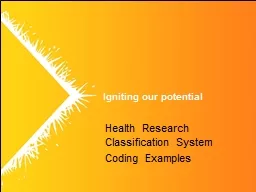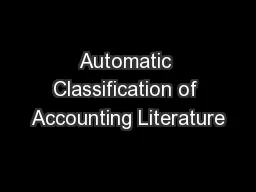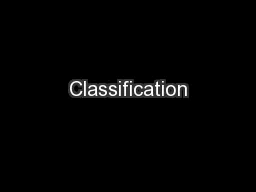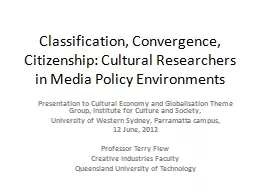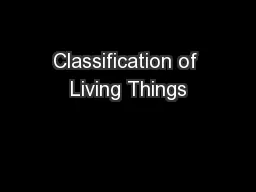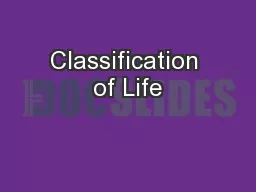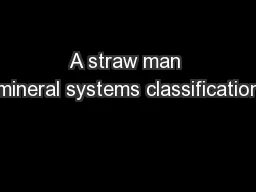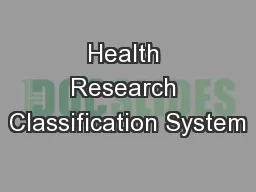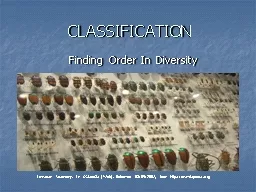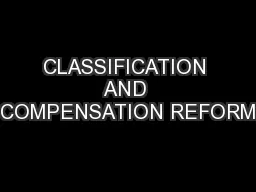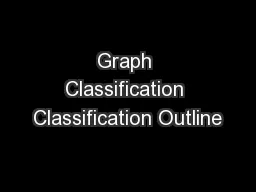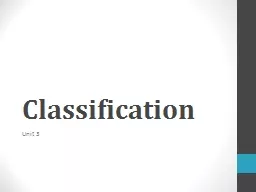PPT-Health Research Classification System
Author : pamella-moone | Published Date : 2016-09-15
Coding Examples Identifying the main aim Identification and mapping of osteoporosis genes in the general population by DNA pooling Osteoporosis is a common disease
Presentation Embed Code
Download Presentation
Download Presentation The PPT/PDF document "Health Research Classification System" is the property of its rightful owner. Permission is granted to download and print the materials on this website for personal, non-commercial use only, and to display it on your personal computer provided you do not modify the materials and that you retain all copyright notices contained in the materials. By downloading content from our website, you accept the terms of this agreement.
Health Research Classification System: Transcript
Download Rules Of Document
"Health Research Classification System"The content belongs to its owner. You may download and print it for personal use, without modification, and keep all copyright notices. By downloading, you agree to these terms.
Related Documents

